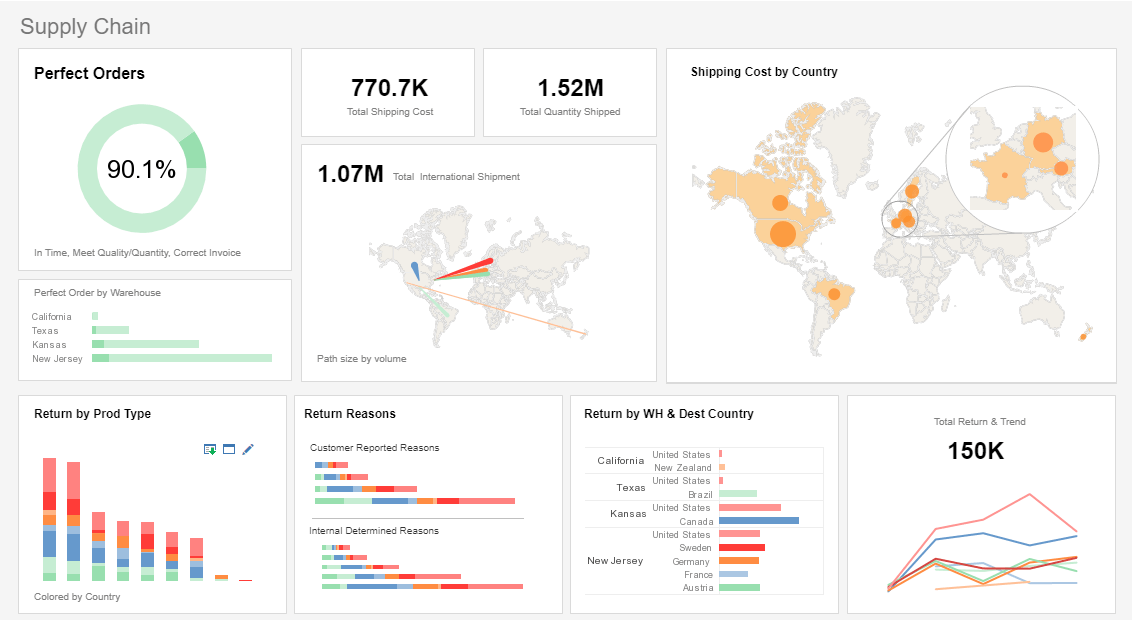InetSoft on DM Radio: Recommendations for Data Visualization Tools
This is the continuation of the transcript of DM Radio’s program titled “The Eyes Have It: Ten Reasons Why Data Visualization Rocks.”
Eric Kavanagh: Yeah. And in terms of what you might call machine learning, I guess Rich, I will throw this out to you. I have to think that making recommendations to users about how to look at data, while it would be extremely valuable, has got to be very difficult to program. What do you think about that?
In other words, an application taking a set of data and then making some suggestions as to how that data be viewed, I have to think that’s a pretty complex nut to crack, right?
Rich Penkowski: I think it is. And I don’t know that it's necessarily kind of the highest order of importance in this particular domain. I think that using some machine learning to apply rules on which data to include and exclude in a portrayal or upon retrieval might be, kind of, a far better investment and it's something far easier to achieve.
But I actually think that for a while, we have been advising most of our clients, it's actually better to, sort of, not have a limit on what’s getting portrayed because that’s going to really teach the organization how to be more selective and thoughtful about the information that they are looking at.
Metadata Management is a Good Way to Handle This
But I would say the best application for machine learning in this particular context really is around the logic of what’s getting included and excluded as opposed to what gets interpreted.
Eric Kavanagh: Yeah that’s a good point and obviously, metadata management is a pretty good way to handle all that. I guess one thing that just kind of popped into my mind here and maybe Suzanne, I will throw this over to you, is if you have in your tool a number of built-in data visualization techniques, you could theoretically apply a filter that you could say, okay, go ahead and run, take these datasets and run these 10 or 15 different filters on it, and pick out the one that has the most outliers. Is that unrealistic or can that happen?
Suzanne Hoffman: I think programmatically that could easily happen. I mean one of the things that we have the ability to do is actually automate the progression of data through and you could easily process it through different levels of filters along that process. So you could see the data contracting or banding depending on which filters were applied at which time and it would give you an indication of which is the best filter so that you could programmatically choose that one for the future.
Eric Kavanagh: Yeah. And that kind of gets back to these slider bars, which I always find to be the most -- some of the most compelling, at least because you can get that, you can put one of those dimensions on the slider, right, you can even put two dimensions or more I suppose on a slider. I guess for closing comments, let’s go around the room and just offer our best advice to folks. Mark, what’s your most useful advice you can offer to people to make the most of their data visualization software?
Key Considerations When Choosing Data Visualization Tools
Mark Madsen: Well, I think especially if you are evaluating tools to understand the context of use, is it just to explain something? Those kinds of things, simple BI charting libraries work. Is the purpose to provide dynamic exploration for an analyst who knows what they are doing and can, therefore, incorporate stats and other data, or is it more for a business type analyst or an end user who knows the business side of things but not the data. Lastly, is it something where you are trying to create a presentation to persuade people? These different use cases drive different feature uses for choosing a data visualiation tool.
When selecting a data visualization tool, it's important to consider not only the technical capabilities but also the ease of integration with existing data sources. Tools that offer flexible connectors and support for a wide range of data formats can significantly reduce the time required to prepare and visualize information. This flexibility empowers organizations to adapt quickly as their data landscape evolves, ensuring that insights remain accessible and actionable.
Another key factor is the scalability of the visualization solution. As data volumes grow, the ability of a tool to handle larger datasets without compromising performance becomes critical. Solutions that leverage in-memory processing or cloud-based architectures can provide the responsiveness needed for interactive exploration, even with complex or high-volume data.
User experience also plays a pivotal role in the adoption and effectiveness of data visualization tools. Intuitive interfaces, customizable dashboards, and guided analytics features help users of varying skill levels to extract value from their data. Training resources and community support can further enhance the learning curve, enabling teams to maximize the potential of their chosen platform.
Finally, security and governance should not be overlooked. Robust access controls, audit trails, and compliance features are essential for organizations handling sensitive information. A well-designed visualization tool will provide administrators with the means to manage permissions and monitor usage, ensuring that data remains protected while enabling collaboration and insight generation across the business.


